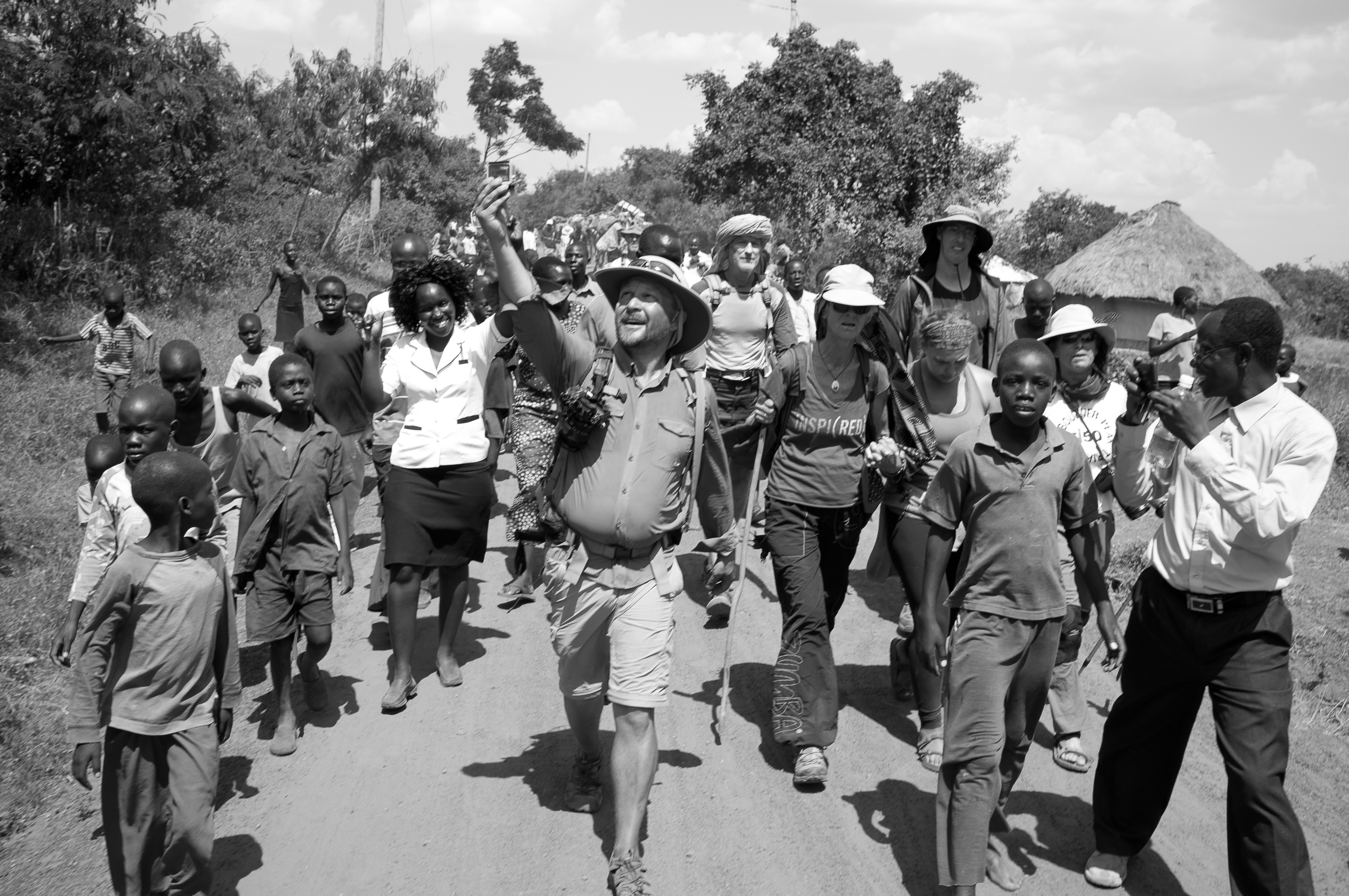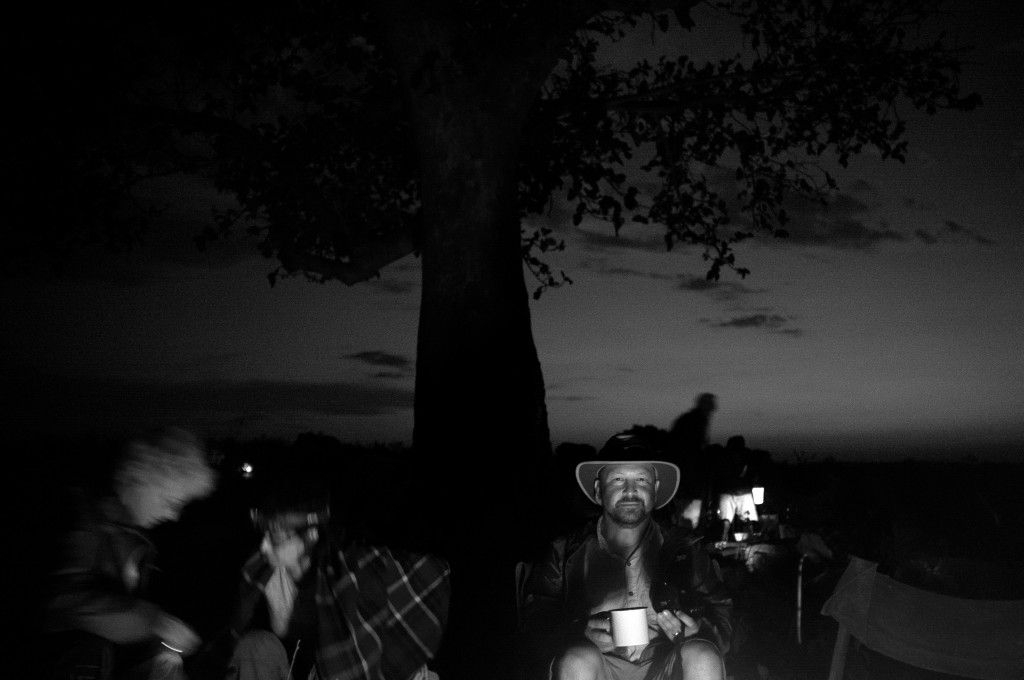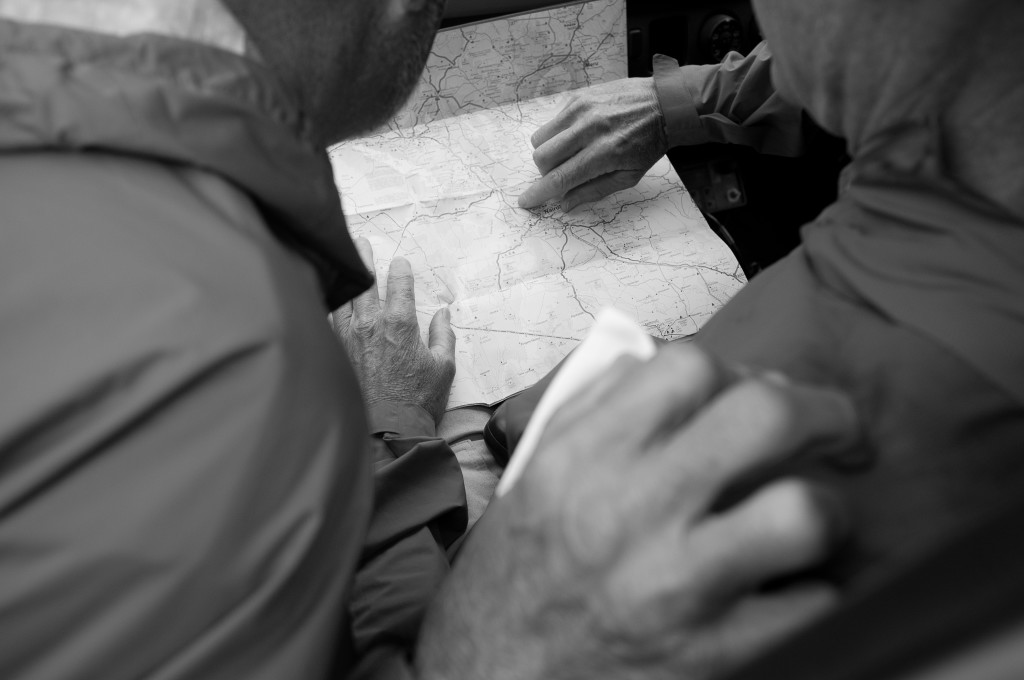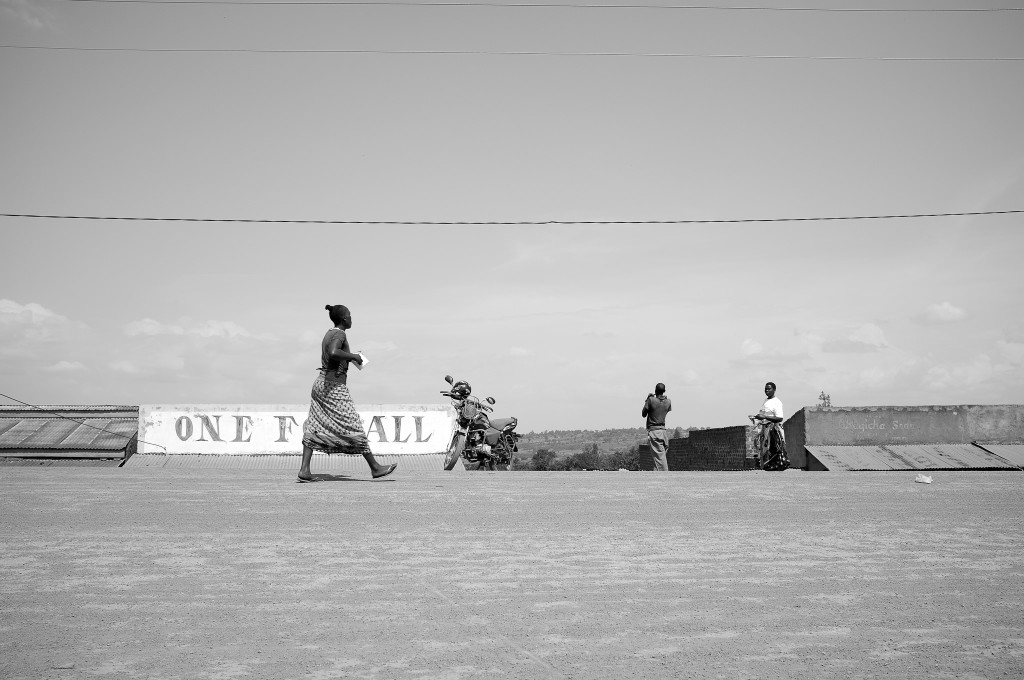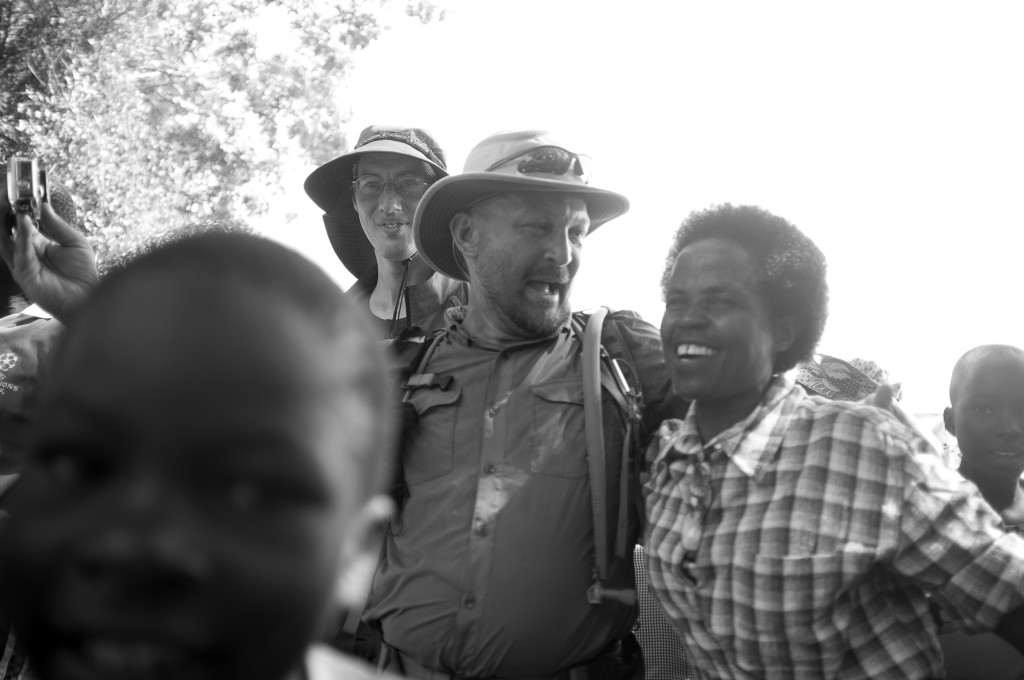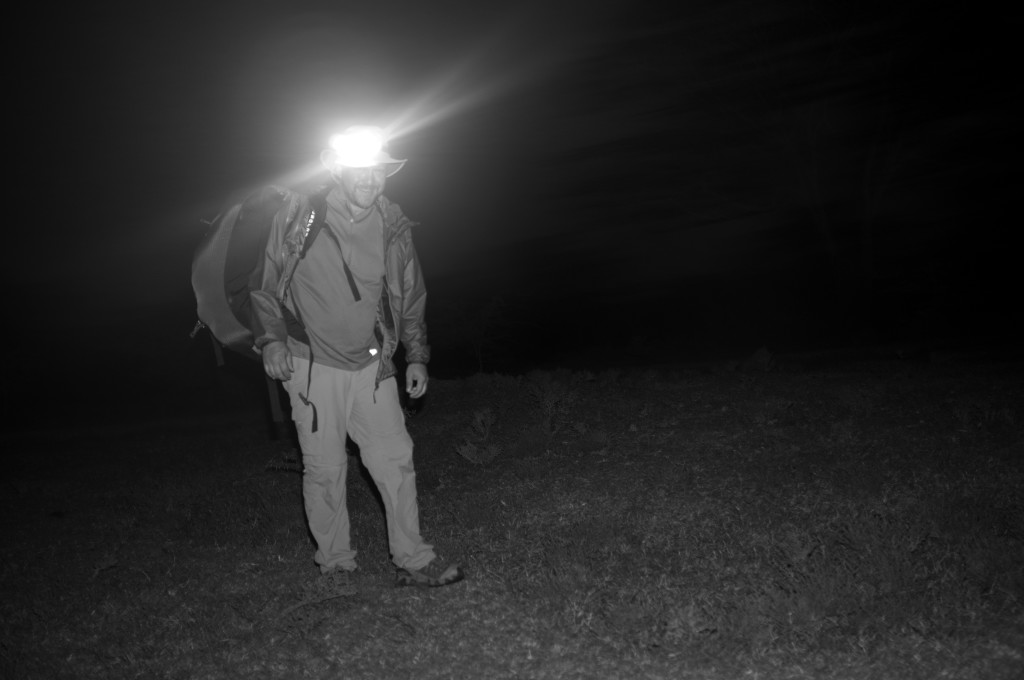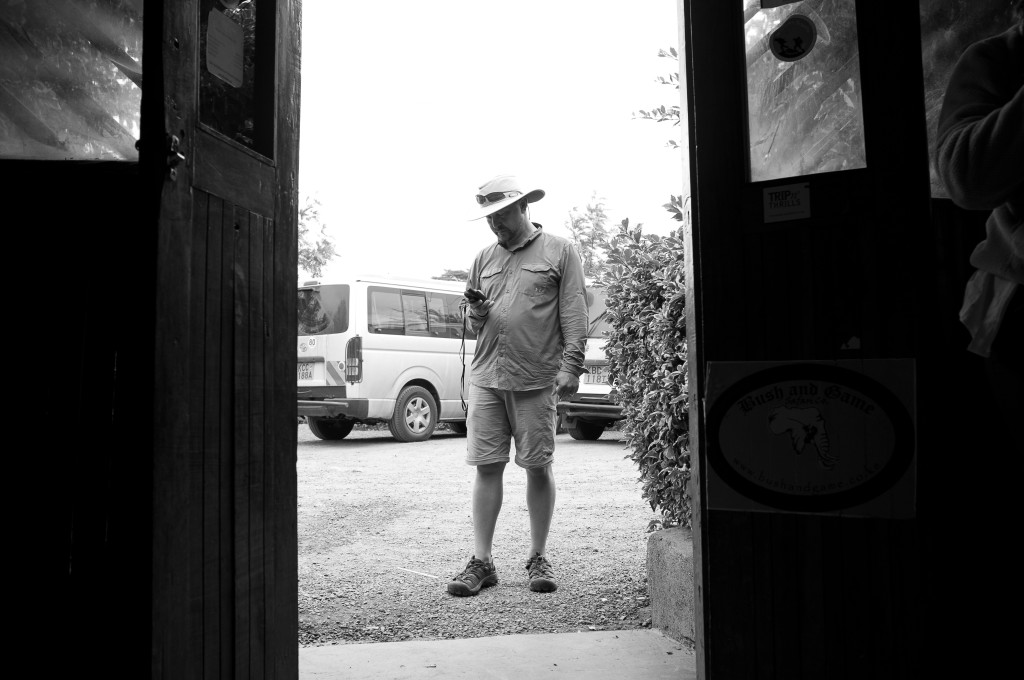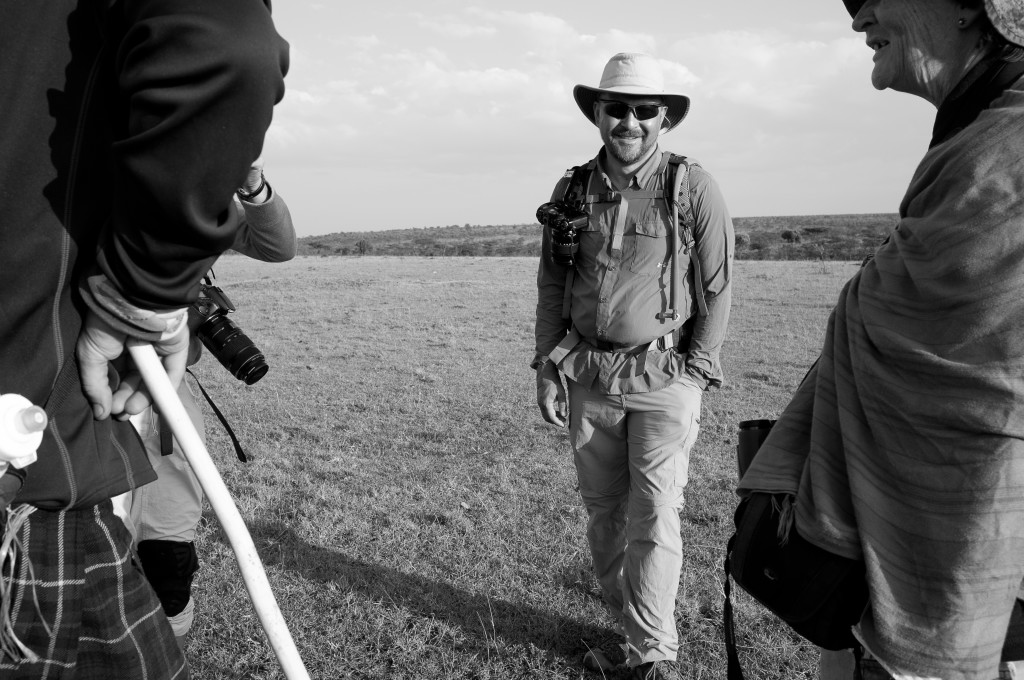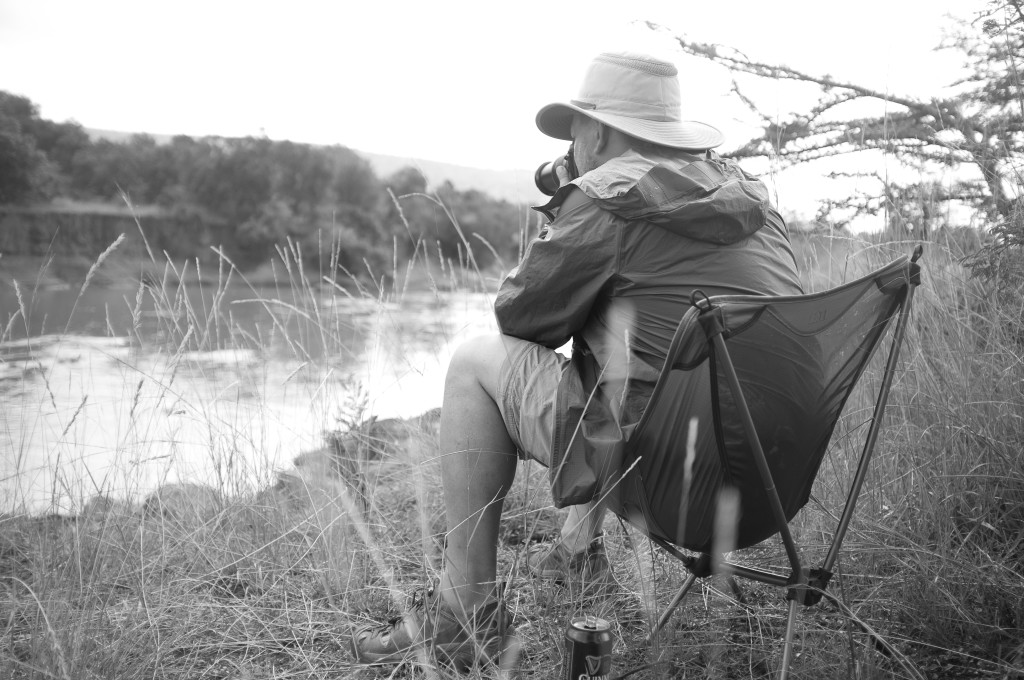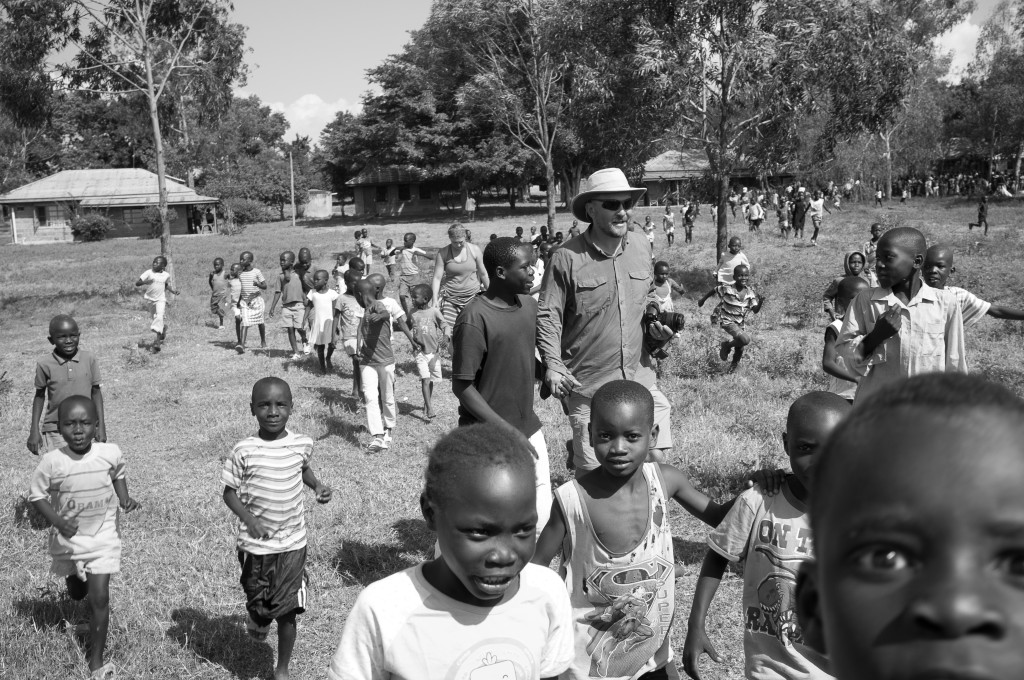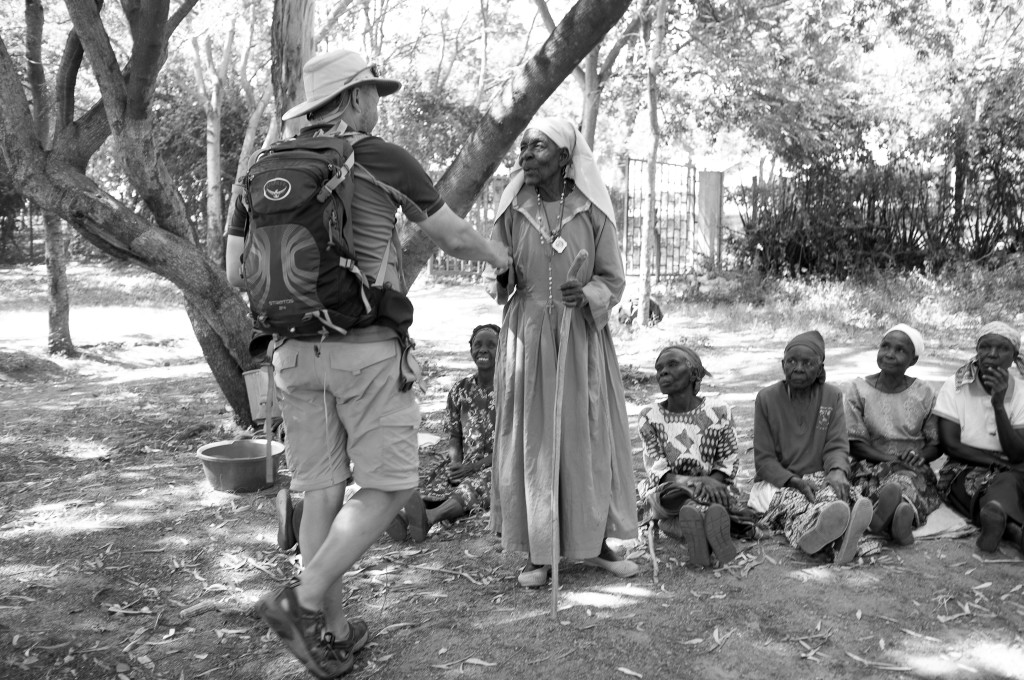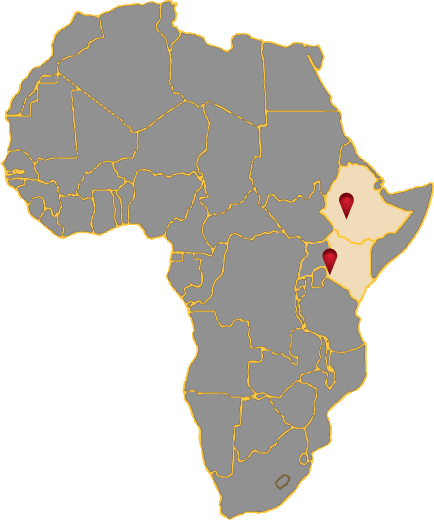This is Part 5 of a multi-part essay that chronicles Tembea Na Mimi, a walk across Kenya.
by Jeff James
Rob walked with James, our Maasai guide, showering him in conversation. “What are those animals there, James?” Rob inquired, pointing far into the distance. “They are cattle,” says James. “Cattle? They look like sheep. Are they calves?” Rob persisted. “They’re cattle,” James repeats. “They sure look like sheep. How many cows and sheep do you have, James?”
Rob taught James a song called “Put a Melody in my Heart,” which required sticking your tongue out and waggling your bottom. An unusual sight on the Kenyan plains, but somehow fitting and funny. James struggled with the “L” sound and could only sing “merody.” This made them laugh like kids, inducing a great spirit for walking. And walking is what they did, Rob probing James’ life, eager to know about his family and his culture, forging a connection deeper than the mark of their footprints on the savanna.
As the day wore on our questions pivoted, and became more time-oriented. We’d ask, “How far ’til camp, James?” “It is just there, over that hill,” says James. “About 3km. One hour of walking.” And then 2 hours later, we’d ask again, “How many more miles to camp, James?’ And James’ reply was just the same. It was always just over the hill, a couple of kilometers away. Day after day that pattern continued and we vowed never to trust James’ time estimates again. At first we thought it was just James, but then our next guide Gisoi came along, ushering us from the edge of the Mara conservancy to the top of the escarpment. And after Gisoi, it was George and countless other Kenyans along the way, guiding us with time and distance estimates which were never, NEVER accurate.
We were obsessed with time. We needed to wake up at 5:15, have our packs camel-ready by 6:15, and start walking by 7:00. We would walk for 50 minutes and rest for 10. Gadgets and maps were pulled out at breaks to triangulate our whereabouts, communicating with satellites, modern day angels tracking our steps. Rob had the best gadget, sending a ping to the heavens every 10 minutes. We would determine the crow-fly distance, factor in number of steps taken since morning, add 20% for weaves and dips to reach the total number of miles walked. We then converted this to kilometers so our guides could understand what we were talking about. “What’s that conversion formula again?” I would turn and ask Rob. And he would mutter some equation at me, which I would promptly forget. And when factoring was complete we would determine, almost always, that we still had miles to cover before we could camp.
We had 15 miles a day we needed to walk; we wrote it in our brochure and put it on the website. 1 cause, 10 days, 150 miles, 4 million steps . . . whatever! We did more, and we dedicated ourselves to more than one cause. But they’re numbers and they drive us. We westerners need our precious first world constructs of time to determine value. If it can’t be measured it’s probably not worth doing, right? Wrong!
It’s insanity measuring life in numbers. Kenyans were notoriously bad at time and distance estimates because those are irrelevant in their lives. The schedules that drive life in the bush, “Africa time”, are determined by the seasons of rain and where the sun rests in the sky, not by punching clocks, board meetings, or Gantt charts.
I once received directions from an old man who said our destination was “four sees” that way. Which meant that from where we stood to the horizon was “one see,” and the distance to our destination was that times four. His life was not spent clocking miles in a car. He was a walker; distance was measured by sight and time by the sun. Days and years are not counted, birthdays aren’t celebrated, and there are no guidelines about the number of meals one should eat per day. It could be days before the next proper meal.
But life goes on. The sun rises, water is fetched, the ground is tilled, seeds sowed, wood collected, and a child dreams of going to school before running off to usher home the livestock. Neighbors share a laugh. Laughter is abundant in rural Africa, tipping the scale of life towards joy. Perhaps the essence of community is not in the tidiness of your neighbor’s hedges, but rather in the laughter shared over the top of them. Rob seemed to recognize this. The sound of his laughter mingled with the Africans in a shared appreciation for the joy of being alive, walking, together, on Africa time.
Esoterically, I wondered as we walked through these impoverished communities, if one’s existence is not measured by what you own or accomplish in life, how then is life’s value determined? Is there a measure for a life well lived? Is life’s value intrinsic, imparted at birth by a mother’s first kiss? Poverty’s children are not unloved; they’re just hungry for opportunity and nutrition. Perhaps in the absence of material wealth, emotional wealth becomes the greatest commodity. Perhaps “Africa time” is not the absence of motivation, but instead the presence of love…love for the simple experience of being in this world.
On the last day of walking, we skipped many of our 10 minute breaks. From Othoo on, our stride had found new strength, our destination was soon in sight. It was our final stretch of road. It might have been the road to Emmaus for all I knew; the large crowd around us could easily have concealed a saint. We were euphoric, enveloped in accomplishment, energized by the bustle.
Our gadgets were finally tucked away. We knew we would arrive the way we started, walking. I was welling with the urge to weep or laugh. And then Rob did both. “Jeff, look!” he cried, pointing down the road toward a chorus of nurses, healers dressed in blue and white dancing toward us, singing a gospel song. Our groups merged into one, and the song floated along for our participation. And so we sang, “We are marching, we are marching. We are marching in the light of God.” In the Kenyan rendition of the song, there’s a sweet howl tucked onto the end of “God,” lovingly drawing out His name.
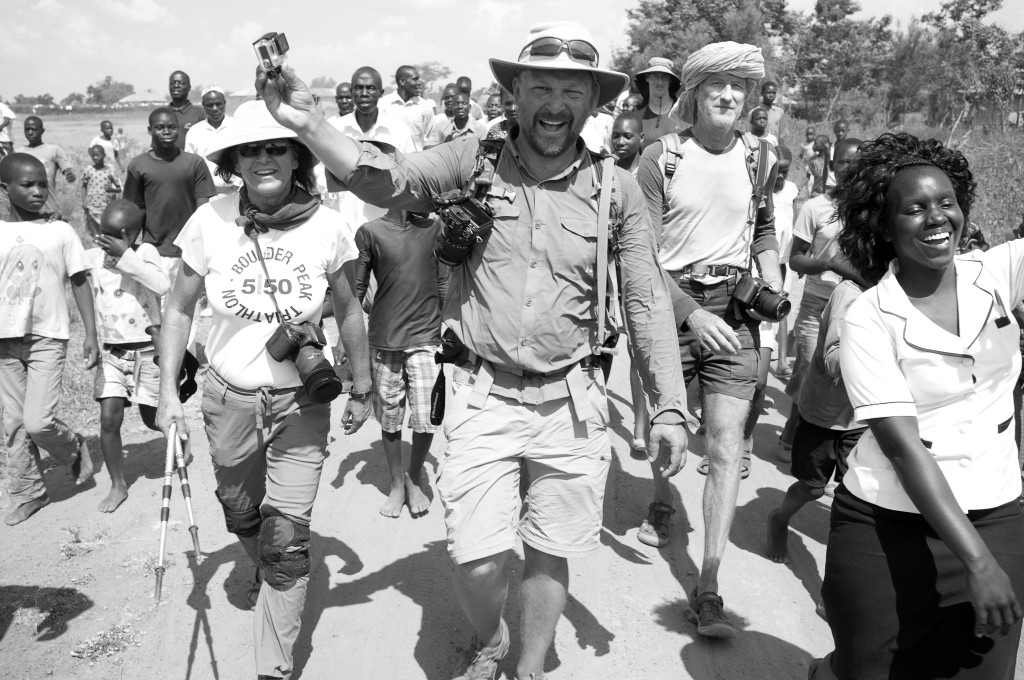
Rob Andzik embodies a brilliant balance of western time and African time. He’s an engineer who launches satellites into space, those angels that enabled us to communicate and navigate and keep to our schedule. Rob’s work world is driven by technology, and his professional life is no doubt steeped in timelines and time-boxed meetings. The world of business needs to operate that way, and it’s a rare individual who can be equally comfortable in that realm and also at ease in Africa time. Rob is fluent in both. There’s a Swahili saying, “Haraka, haraka, ha ina baraka,” which means hurry, hurry has no blessings. It is the blessings in life that matter. We seek blessings by doing good, and our lives are enriched in return. And those blessings require a different quality of time, committed time invested out of love.
In the presence of orphans, children in need, Rob gifts them with earnest, genuine love and devoted time. It’s an incredible sight, this man engaging with children and the downtrodden, his world of business and technology as far away as those satellites in celestial orbit floating above him. He is a champion of the cause, the 1 cause that is many, and as Lalmba’s chairman he skillfully intertwines his time as husband, father, and engineer with being “A father to the fatherless, a defender of widows, God in his holy dwelling.” ~Psalm 68:5
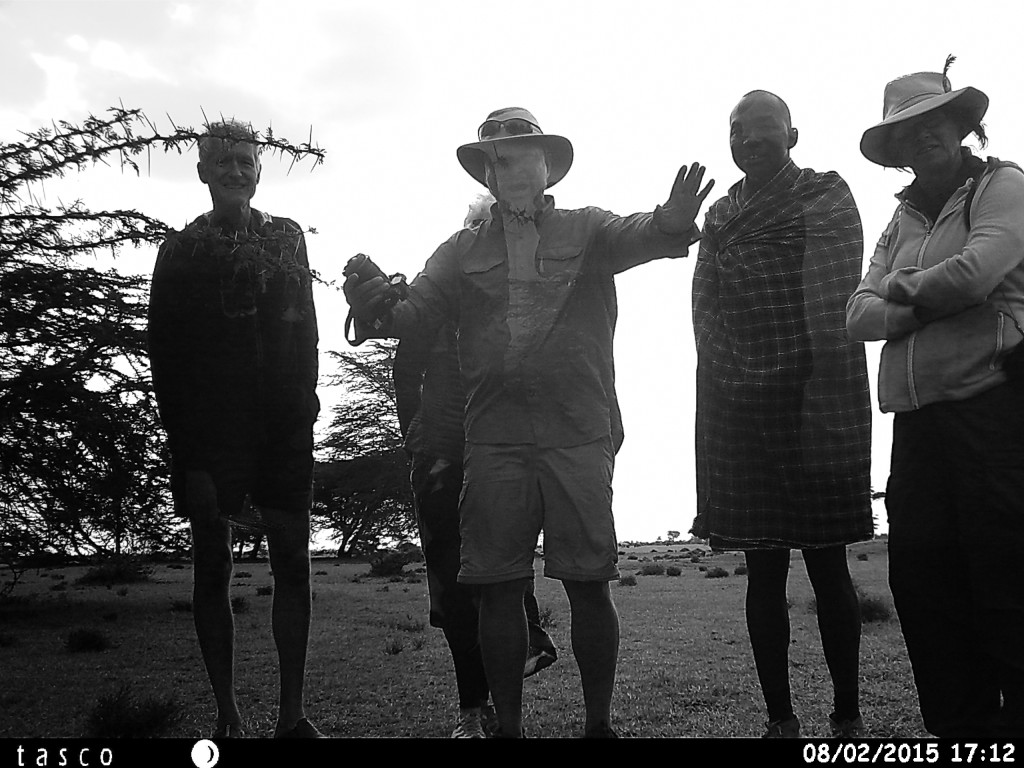
-
Rob photo bombing the trail camera. Intended to catch pictures of wild beasts around our camp at night, it only captured us.

